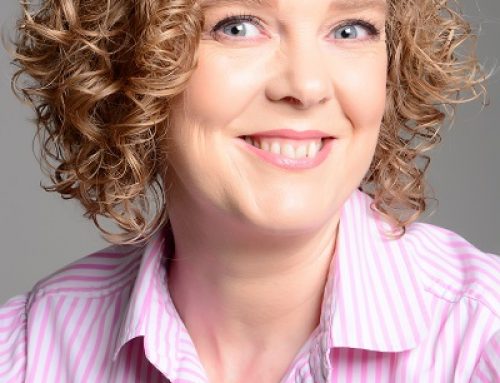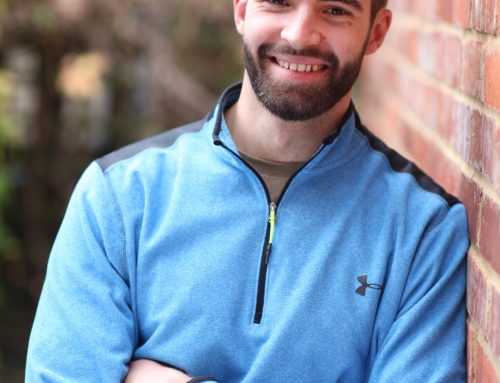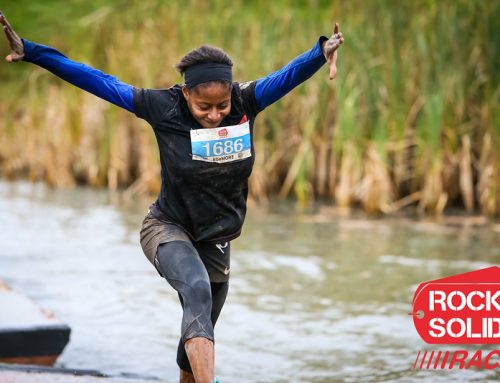Is movement the key to feeling fab? Jill Willis of http://www.thewholesomepeapod.co.uk/ shares her biohacking tips to move more to help support your wellbeing. 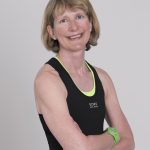
“Almost everyone, from the very sedentary to athletes, can benefit from movement to promote better mobility. However, if you are not flexible the thought is enough to make you avoid any movement or flexibility activity whatsoever.
But don’t worry, you don’t have to tie yourself in knots!
Muscle imbalance
Many pain issues, such as the lower back and the neck, are frequently the result of muscle imbalance, which means some muscles are tight and others weak. Muscles work in pairs and need to be balanced to work effectively, and to allow joints to run smoothly. If a joint is pulled out of optimum alignment, it can cause friction and wear out, resulting in a replacement joint after a lot of pain. We are like a bicycle wheel where the spokes need tightening or loosening to make the wheel run true and smoothly. So, our muscles need to be balanced through stretching and strengthening to allow us to move freely without pain in good posture.
The perils of sitting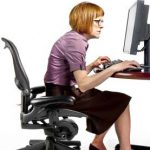
Sitting is common place these days – at a desk, in the car, on the sofa. Spending long periods of time sitting without adequate movement results in a lack of flexibility, even to bend down and put your shoes on! It also increases the risk of fat gain and obesity, elevated blood sugar levels and insulin resistance.
Whilst we are currently suffering from the Covid 19 pandemic, prolonged periods of sustained siting is now being termed the ‘pandemic of inactivity’!
This has been associated with a 21% increased risk of lung cancer and 24% increased likelihood of colon cancer. If we sit too long we become like a stagnant pond giving our major organs lack of space to operate and a lack of blood flow and energy without natural rhythm and flow as a consequence.
Stetching and flexibility
It’s important to note that if a muscle is not tight, it does not need stretching. A common mistake is to stretch muscles that don’t need stretching. This w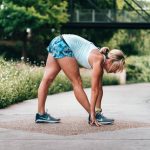 ill make them looser and even less supportive than they could be in the first place! We need muscles to support our skeleton, and even more important as we age, we need to avoid falling over, or any other factors related to instability of our joints which can cause pain.
ill make them looser and even less supportive than they could be in the first place! We need muscles to support our skeleton, and even more important as we age, we need to avoid falling over, or any other factors related to instability of our joints which can cause pain.
We are all different and most people don’t need the flexibility of a gymnast, however, if you do take part in sport and are not very flexible, stretching will help you to avoid injury caused by training with muscle imbalances. Exercise can be frightening to some people as they think they will be shown up, or won’t be able to do it.
Just move more
 I am talking about movement – just moving about more will help you not only to feel better, give you more energy and be in less pain but it can also help to reduce your risk of heart disease and stroke, reduce your risk of cancer, reduce your risk of type 2 diabetes, reduce blood pressure and reduce risk of osteopenia and osteoporosis. Who doesn’t want to live longer, look younger and be in less pain?
I am talking about movement – just moving about more will help you not only to feel better, give you more energy and be in less pain but it can also help to reduce your risk of heart disease and stroke, reduce your risk of cancer, reduce your risk of type 2 diabetes, reduce blood pressure and reduce risk of osteopenia and osteoporosis. Who doesn’t want to live longer, look younger and be in less pain?
There is also growing evidence suggesting a positive association between physical movement activity and psychological wellbeing, less depression and enhanced cognitive function. I expect we have all experienced first hand someone close to us suffer from cancer, dementia or heart disease. Let’s try and avoid these at all costs, and it doesn’t mean moving to a full on exercise programme.
Simple biohacking tips to help you move more
Let’s just try and put movement into our day where we can. For example:
- Walk more, or if you can’t walk, or have difficulty walking, stand up (even in a standing frame if you have no use of your legs) Weight bearing is essential for bone health.
- Carry the shopping rather than have it delivered.
- Breathe! The first thing we do when we arrive on the planet and the last thing when we leave. It is vital movement for our health. We often forget the the diaphragm is a muscle in itself and needs to be expanded fully to work properly. It is also heavily involved in the pelvic floor, and we know how important that is!
Try and consider the basic moves that you need for everyday life for the rest of your life, whether it is:
- Getting up from a chair
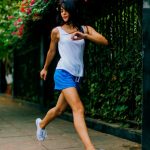
- Lifting your shopping out of the car
- Playing games with your children or grandchildren
- Getting up from the floor
- Pushing your wheelie bin out
- Taking part in your chosen sport (imagine being able to enjoy dancing again, have greater flexibility to make that tennis serve and golf swing)
or simply being able to enjoy life in less pain with more energy.
Basic primal pattern moves
We need 7 basic primal pattern moves in our daily life:
- Squat or sit down and stand up.
- Lunge – the lunge pattern is used in most sports, for example throwing must use a lunge firstly (and then rotation) to avoid just using the shoulder and potentially causing injury. In a non athlete, failure to be able to lunge correctly greatly increases your chance of falling. Falls cause hip fractures and are one of the leading causes of death among the elderly.
- Twist – rotation of our spine is a move that starts to deteriorate from aged 40. It is also important in our gait pattern, allowing us to walk freely. Twisting is integral to most functional activities. Back injuries are often caused by bending and twisting so it is vital that you can twist effectively to avoid injury.
- Push – overcoming the weight of an object to move it forward. Even your wheelie bin or shopping trolley!
- Pull – the reverse move to push. Even pulling the washing out of the washing machine or pulling yourself up.
- Bend – hip hinge, a basic move but you need it to pick things up off the floor and put on your shoes and socks!
- Gait – walking pattern.

Online movement classes
There are online movement classes available where you can stay in the comfort of your own home to move more. There is no travelling time, and no embarrassment of having to attend a public class or go to a gym. These classes will help you, using this concept, and will include exercises to mobilise, stabilise and strengthen our joints, through basic movement.
Ref: British Journal of Sports Medicine, Journal of the National Cancer Institute, How to eat Move and Be Healthy, Paul Chek.”
Thank you Jill for sharing your biohacking* tips to help people support their wellbeing by moving more. For more simple ways to biohack your body and mind to unlock your potential, check out this blog: https://feelfabnaturally.com/simple-tips-to-help-you-biohack/.
Biohacking made simple
 * Biohacking is using all of the tools we now have at our disposal to improve our lives by taking control of our biology. It’s actually been used for centuries. Human beings have always looked to maximise their performance. This is why nutrigenomics is a fundamental part of biohacking a healthier life. Scientifically-backed products that support healthy ageing on a cellular level are now available to add to your biohacking toolbox.
* Biohacking is using all of the tools we now have at our disposal to improve our lives by taking control of our biology. It’s actually been used for centuries. Human beings have always looked to maximise their performance. This is why nutrigenomics is a fundamental part of biohacking a healthier life. Scientifically-backed products that support healthy ageing on a cellular level are now available to add to your biohacking toolbox.
Nutrigenomics products support the body’s natural cellular function by targeting the main biochemical effects of ageing. These include issues like oxidative stress, natural mitochondrial deterioration and more.
Biohacking and antioxidant activation
So why are antioxidants so important if you’re looking to feel fab? When you cut open an apple it goes brown as it has basically oxidised. This has caused a rapid increase in its ageing process. As we age, we oxidise just like the apple because over time – from our 20s onwards – our bodies produce fewer of the antioxidants needed to neutralise the cellular damage caused by free radicals.
This means we have a high oxidative stress level so our cells don’t function quite as well as they did. Typically our energy levels drop, our sleep patterns change and our inflammation levels rise as just three results of this process.
Supporting your cellular health
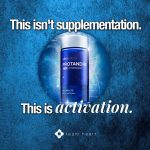 What are our options to get more antioxidants into our bodies? How it works is that one antioxidant basically hands over an electron making one free radical happy so that it can continue on its merry way without causing damage. However, you can’t consume enough antioxidant-rich fruit and veg or antioxidant supplements to deal with the 300 sextillion or so (that’s 300 plus 18 zeros!) free radicals your body has to deal with every day.
What are our options to get more antioxidants into our bodies? How it works is that one antioxidant basically hands over an electron making one free radical happy so that it can continue on its merry way without causing damage. However, you can’t consume enough antioxidant-rich fruit and veg or antioxidant supplements to deal with the 300 sextillion or so (that’s 300 plus 18 zeros!) free radicals your body has to deal with every day.
Up to recently, these were our only strategies to counter free radical damage. In reality they’re like throwing a glass of water on a bonfire and hoping it will put it out…
You can naturally reactivate your own antioxidant production through biohacking to support your cellular health from the inside out. Check our our natural, patented and clinically proven product which lowers your oxidative stress level by an average of 40% in just 30 days for the price of around half a cup of coffee a day: Protandim Nrf2.

